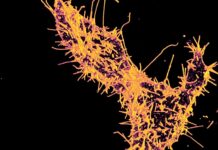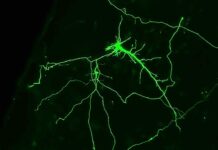In a groundbreaking new discovery, scientists have found a group of muscle fibers in the limb bones of mice that are faster than any previously recorded in mammals. These fibers, aptly named “superfast” fibers, are usually observed in hummingbird wings and human eyes. Led by stem cell biologist Ng Shyh-Chang, a team at the Institute of Zoology at the Chinese Academy of Sciences and the Beijing Institute for Stem Cell and Regenerative Medicine developed a cutting-edge method for identifying muscle fibers that uses mass spectrometry imaging (MSI) and liquid chromatography mass spectrometry (LC-MS). Combining these two methods enabled the team to ascertain the presence of specific fibers and how they were distributed throughout the muscles.
The Intricacies of Fiber Identification
Fast twitch fibers produce more significant contractions in shorter durations, while slow twitch fibers are more fatigue-resistant and generate smaller muscle contractions. Scientists have previously speculated that intermediate types of muscle fibers exist between these two types. Ng and his team aimed to detect and identify these fibers, including the different metabolic subtypes present in various parts of the muscle.
Revolutionary Research Methods
To identify muscle fibers, researchers typically employ LC-MS. This technique involves crushing tissue into a semi-liquid mixture known as a slurry, which is then subjected to specialized chromatography columns and a mass spectrometer. Although effective, this method fails to reveal the distribution of fibers or identify rare fiber subtypes. Conversely, MSI captures high-resolution images of entire frozen muscle sections. Ng and his team used matrix-assisted laser desorption (MALDI) MSI, a particular type of MSI that treats frozen muscle sections with a matrix substance before producing an ion map using a pulsing laser.
Intriguing Results
The team’s discoveries revealed that muscle fiber subsets were distinct from each other and fell into pre-existing categories, with the exception of the superfast fibers. These fibers were discovered in the limb muscles of mice and were somewhat distinct from those found in other regions of the body. Ng suggests that these fibers could be utilized to improve neuromuscular coordination and increase neurostimulation in humans, although it will take some time before clinical applications are developed.
Implications of the Discovery
Ng and his team aspire to increase their knowledge and comprehension of muscle fibers through their discovery and eventually enhance regenerative medicine for neuromuscular ailments. By combining LC-MS and MSI techniques, they successfully identified muscle fibers and determined how they were distributed. This discovery of superfast fibers in mouse limb muscles is particularly thrilling for regenerative medicine since researchers may be able to find methods of artificially inducing their production in patients with neuromuscular diseases.
Google News | Telegram
















